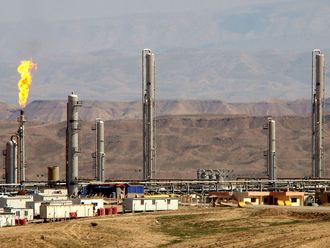Washington: Government data released on Friday showed that a closely watched measure of inflation fell in January for the first time since 1982, potentially giving the Federal Reserve more leeway to keep interest rates at ultra-low levels.
The Labour Department said that the core consumer price index, which excludes volatile food and energy prices, dropped 0.1 per cent last month. The dip was unexpected; economists surveyed by Bloomberg had predicted an average increase of 0.1 per cent.
When energy and food costs are added in, consumer prices overall rose 0.2 per cent, the Labour Department said. But the core figure is widely considered a more precise gauge of long-term inflation trends.
Wobbly recovery
The Fed does not think that inflation will be a problem through this year, if only because the economy is still in a wobbly recovery. When people are out of work and don't have as much money to spend as they used to, there's less demand for goods, which keeps inflation down. Institutionally, that's the Fed's view.
But not every Fed policy maker agrees. In a speech Thursday, St Louis Federal Reserve Bank President James Bullard said the financial markets are expecting inflation to pick up, citing increased spreads between yields on ordinary Treasury securities and inflation-protected Treasury securities, whose principal rises and falls with prices. If inflation-protected Treasuries are selling at a faster clip, that means people are worried inflation will rise.
Should inflation start to flare up, the Fed would have to revisit its stance on interest rates. Since December 2008, the Fed has left the federal funds rate, its primary means of managing the economy, at close to zero per cent to help spur the US economic recovery. With unemployment expected to remain well above 9 per cent through the end of the year, the central bank has indicated it plans to keep interest rates low for the foreseeable future.
The consumer price index released on Friday stand in opposition to government data released the previous day showing that prices at the wholesale level rose 0.3 per cent, even after excluding food and energy costs. When those costs are factored in, wholesale prices jumped 1.4 per cent, indicating that businesses are experiencing modest inflation, even if consumers are not.
If the difference between wholesale and consumer prices is more than a blip and becomes a trend, two outcomes are possible, and neither is good, said one analyst.
"The rise in [wholesale prices], if sustained, will either result in an eventual rise in consumer prices or a squeeze in company margins," said Peter Boockvar, equity strategist at Miller Tabak. "Either way, someone gets hurt."
There is a logical lag between wholesale prices and consumer prices, and high prices can take some time to move down the pipeline from wholesaler to consumer. And it's hard to tell whether there's a trend underway in wholesale prices. In November, they rose 1.5 per cent. In December, they rose only 0.4 per cent. Last month, they were back up to 1.4 per cent.
- 0.1% Fall in inflation in the US, less food and energy
- 0.2% Rise in consumer prices
- 1.4% Jump in wholesale prices












